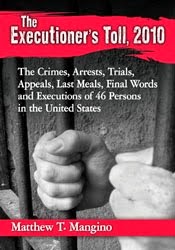Matthew T. Mangino
GateHouse Media
August 5, 2016
The Trump campaign is exploiting crime and fear. Trump’s
campaign is not the first presidential campaign to do so, but to understand
what’s different about the Trump campaign requires first understanding the
history of crime and politics.
In 1964, Barry Goldwater, the GOP nominee for president,
introduced campaign operatives to the concept of crime as a divisive,
hot-button issue. At the time, violent crime rates were beginning to rise. When
Richard Nixon was making his second bid for president in 1968 the Civil Rights
Act had passed, riots had erupted in cities across the country after the murder
of Martin Luther King, Jr., and murder rates had increased 50 percent since
1950. Race relations were tenuous, at best, and Nixon knew it. Crime control
became a surrogate for race control.
The conservative mantra of “tough on crime” worked for
Ronald Reagan and helped push another Republican to victory. In 1988, when
crime rates were soaring, George H.W. Bush clobbered Michael Dukakis with
Willie Horton.
During Bill Clinton’s tenure violent crime was at its peak
and easily exploited. During Clinton’s presidency, Loic Wacquant, as quoted by
Michelle Alexander in The New Jim Crow, pointed out that “(Clinton) slashed
funding for public housing 61 percent and boosted corrections 171 percent,
‘effectively making the construction of prisons the nation’s main housing
program for the urban poor.’”
Today, according to The National Review, the national
violent crime rate is about half of what it was at its height in 1991. Violent
crime has fallen by 51 percent since 1991, and property crime by 43 percent. In
2013, the violent crime rate was the lowest since 1970. Even though violent
crime rates are at near record lows Donald Trump and his surrogates are still exploiting
crime and fear.
Nobody has done it better than former Speaker and
short-lister for vice-president, Newt Gingrich. During a July 22 interview with
CNN’s Alisyn Camerota — highlighted in a recent segment of John Oliver’s Last
Week Tonight — Gingrich had this amazing exchange:
GINGRICH: The average American, I will bet you this morning,
does not think crime is down, does not think they are safer.
CAMEROTA: But we are safer, and it is down.
GINGRICH: No, that’s your view.
CAMEROTA: It’s a fact … but hold on, Mr. Speaker, because
you’re saying liberals use these numbers, they use this sort of magic math.
This is the FBI statistics. They’re not a liberal organization.
GINGRICH: No, but what I said is equally true. People feel
it.
CAMEROTA: They feel it, yes, but the facts don’t support it.
GINGRICH: As a political candidate, I’ll go with how people
feel ...
Apparently, for the Trump Campaign facts don’t matter and
that is the concern. Regardless of what one might think about Goldwater, Nixon,
Reagan, Bush and Clinton their rhetoric was grounded in truth to some extent,
crime rates were rising and some action was justified.
Now some will quarrel, justifiably, that Nixon’s efforts
were more fixated on race than crime and that crime was code for African-American.
However, crime was genuinely on the rise in 1968.
Today it is not about the facts. The Trump campaign is not
only exploiting fear, they are creating it. The campaign is pledging to protect
all Americans from what are essentially the safest streets in more than 45
years.
President Franklin D. Roosevelt famously said, “There is
nothing to fear but fear itself.” In today’s political environment, feeling
afraid is more important than actually having something to fear.
— Matthew T. Mangino is of counsel with Luxenberg, Garbett,
Kelly & George P.C. His book, “The Executioner’s Toll, 2010,” was recently
released by McFarland Publishing. You can reach him at mattmangino.com and
follow him on Twitter at @MatthewTMangino.







